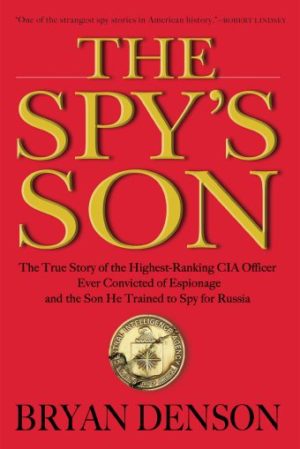You’ve written that gripping long-form story, and you’re champing at the bit to get a book deal. What do you do?
My own journey started with a lot of wrong turns and even more learning, which I wrote about in Part I of this mini-series. But it finally got my first book, "The Spy's Son," onto bookshelves. It tells the true story of the highest-ranking CIA officer ever convicted of espionage, and how he recruited his son to follow in his spy steps.
Contracts for other books followed. And sometime in the next year, “The Spy’s Son” is coming out as a TV-and-streaming docuseries.
Here is my go-to advice about the four essential things you need to do, and how to build a timeline to support that work:
- Create a master chronology of every scene (and event) in your story. This timeline will help you plot your narrative and guide where and when you introduce your key characters. (I’ll show you how I prepare my chronologies below.) The timeline will save you a ton of time when you write your book proposal and query letter to prospective agents.
- Write your book proposal. Remember that this is not just an outline of your story: It’s a sales pitch. Your proposal explains why a publisher should give you a pile of money (not as big as you probably think, by the way) and expect that thousands of readers will each plop down $27 to own a copy. The proposal should also show why your story is relevant, who is most likely to read it, and why you are the one to tell it. The pitch should have a Title Page; a Table of Contents; an Overview; an Author Biography; Target Audience; Comparative Titles, Marketing & Promotion; Chapter Outline; and (the most importantly), a Sample Chapter. Some editors will begin with your sample chapter, so prepare to wow them.
- Search for a literary agent. As you know from the experience I wrote about before, not every agent is going to love your book idea. One reason is that agents tend to specialize in the kinds of books they sell. You want to find one that specializes in nonfiction written by journalists like you. There are many places online to look for an agent, including this one: Query Tracker. One other way to find an agent is to ask friends who have already published books. My agent recently obtained a book deal for one of my college pals.
- Craft a query letter. This is a one-page letter that opens with a friendly introduction to a prospective literary agent. It tells what kind of story you are writing, summarizes your professional bona fides and, in just a few sterling paragraphs, tells the story. If you’re writing a narrative, you should introduce your protagonist and show the complications that keep your hero in trouble. If a prospective agent is intrigued, they will ask for a book proposal. You should have it dialed in and ready to go. Also, you might want to jot down your key talking points in case the agent wants to make contact by phone or Zoom.
Building the spine
Above I promised to show you how to construct a timeline, which is a list of the key scenes and events in your story. These timelines will be invaluable for your query, book proposal and, ultimately, your book. But they are especially helpful as you decide where to open your book.
Related stories
Story Craft: So you want to write a book? Part 1: A strong story and resilient ego
Story Craft: An investigative reporter writes a true-crime series for middle schoolers
When I was preparing to write "The Spy’s Son," I had to find an action scene that would introduce the protagonist, Nathan Nicholson, and put him in both motion and danger. So I scrolled down through the timeline and found the perfect spot, the entry of October 10, 2008. Thus the book opens with Nathan strolling through a community college in Eugene, Oregon, and ducking into a computer lab. There, he writes a message to his Russian handler (a former KGB general) and leaves it in the draft folder of their shared email account. The note signals his plan to meet the Russian in front of a T.G.I. Friday’s in Nicosia, Cyprus.
Your timeline is likely to grow even after you get your book deal, because your additional research will uncover new things. (Files for “The Spy’s Son” eventually grew to more than 48 gigabytes on my computer and 15 linear feet of three-ring binders and other paper files now on the shelves of my home office.) Advice: Put every new thing you learn into the appropriate spot on the timeline as the information comes in, or you will find yourself bogged down with updating your timeline instead of writing the book.

Here’s how I organize my timelines, always on Excel spreadsheets:
Column A is a list of the dates when important things happened.
Column B is what happened in real time. Example: “John Doe boards Lufthansa Flt. 441 to Amsterdam, takes seat 24B next to undercover FBI agent Jane Smith, who later recalls thinking: Doe was clearly drunk, out of breath, and reeked of BO.”
Column C is how I know this. Example: People magazine story; interview with SA Jane Smith; interview with John Doe.
Column D is where I can find this information. Example: News Clips Binder, pages 112-115, August 5, 1992, People mag story: “FBI rubs elbows with stinky diamond snatcher at 30,000 feet.”
Daily discipline
For those of you dreaming of writing a book, I encourage you to do one thing every day to make that happen — even if that just means spending 10 minutes to look for a literary agent or taking down a few notes about your sample chapter. Do not let rejection stop you, and remember the words of the late comedian Milton Berle: “If opportunity doesn’t knock, build a door.”
***
Bryan Denson is a writer in Portland, Oregon, and the author of four nonfiction books, the first of which — “The Spy’s Son” — is being turned into a TV docuseries.



